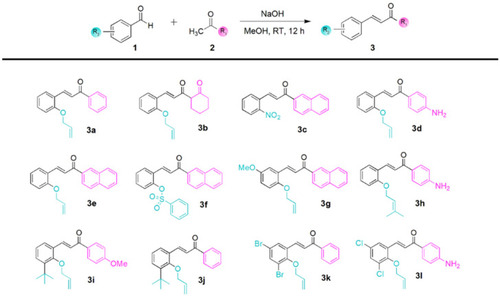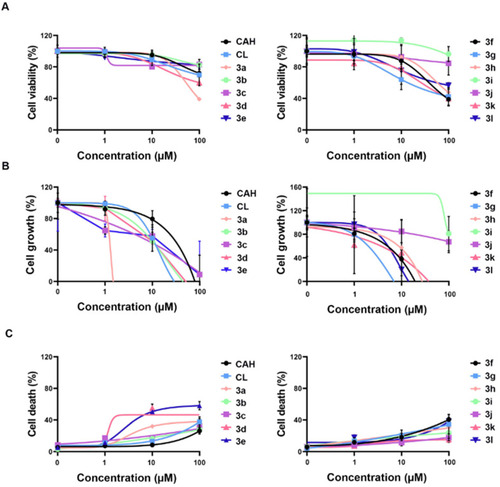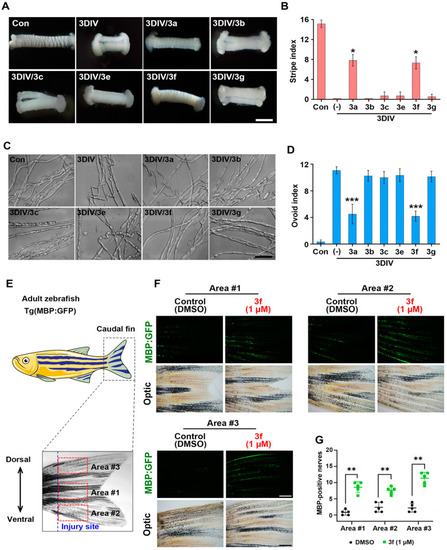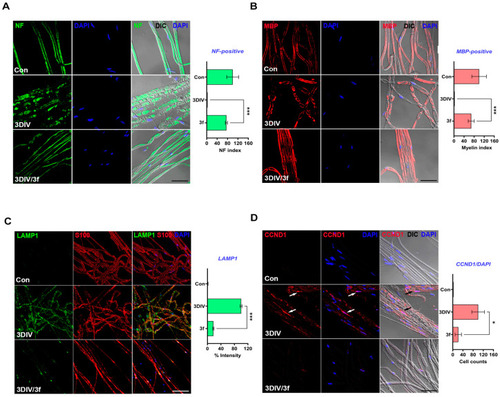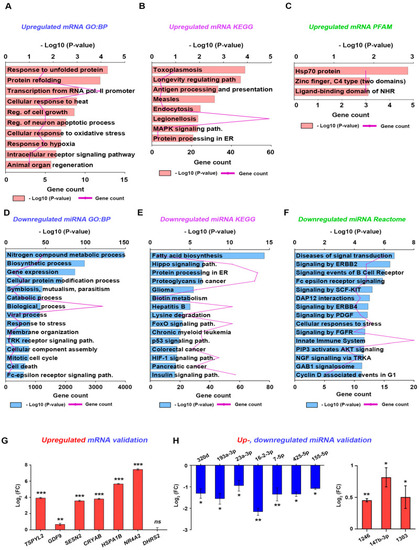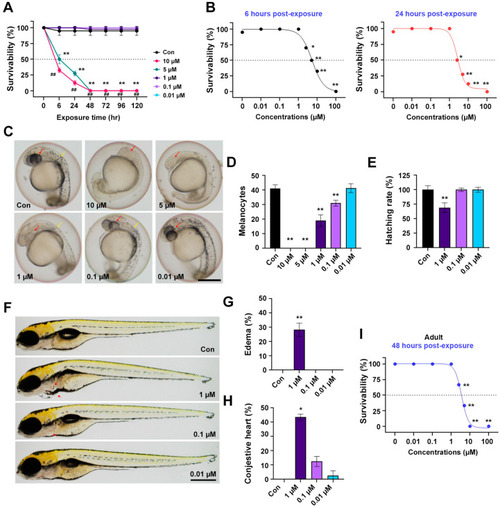- Title
-
Novel Cinnamaldehyde Derivatives Inhibit Peripheral Nerve Degeneration by Targeting Schwann Cells
- Authors
- Chun, Y.L., Park, K.H., Pallavi, B., Eom, W.J., Park, C., Huh, Y., Lee, Y., Lee, J., Kim, S.H., Yeo, S.G., Chung, H.J., Kim, B.S., Jeong, N.Y., Jung, J.
- Source
- Full text @ Antioxidants (Basel)
|
Synthesis of CAH derivatives ( |
|
In vitro efficacy of CAH derivatives |
|
Docking-simulation results between TRPA1 and CAH derivatives. ( |
|
Ex vivo and in vivo efficacy of CAH derivatives against PND. ( |
|
Inhibitory effect of |
|
In silico analysis for the pharmacological mechanism of |
|
In vivo toxicity assay of |

